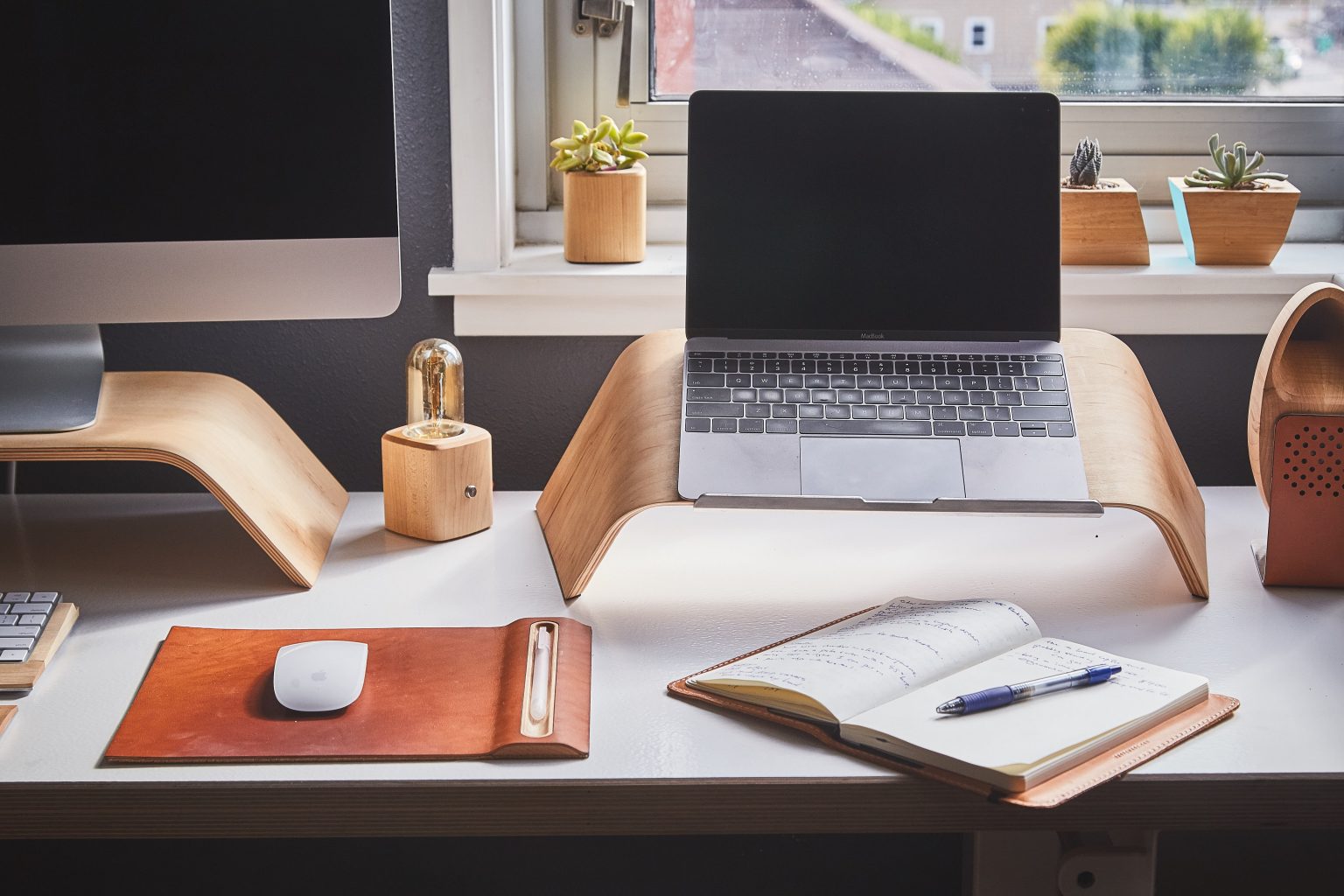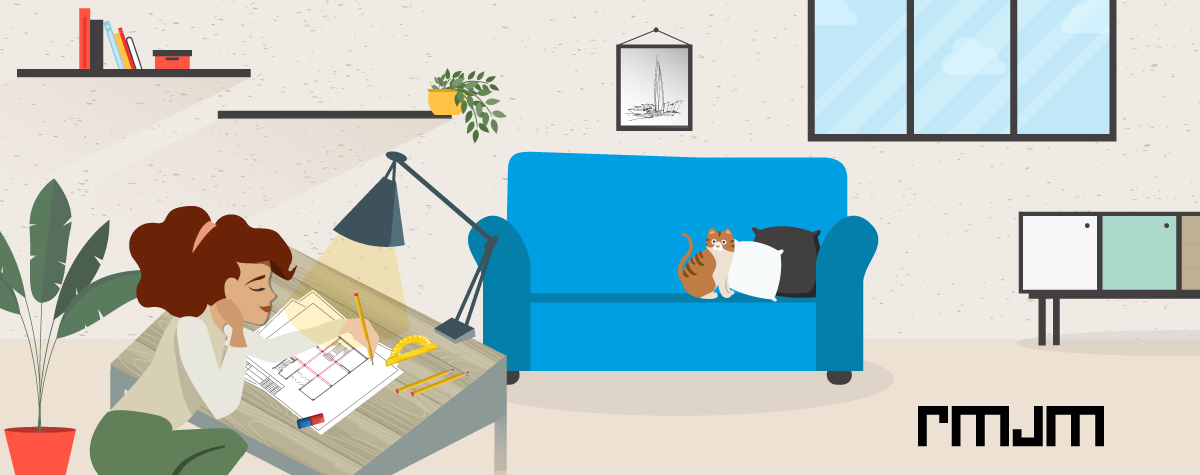Estimated reading time: 5 min
Working from Home: the Architecture Edition
For many of us, the last time we had to work from home for any length of time was when we were students. As global governments work hard to delay the spread of Coronavirus, many people have found themselves back at home and navigating a brand-new work schedule. Through this article, we hope to share some of our best tips and tools for making work from home work for you!
Get Up and Go
One of the really important tips when you have to work from home is that you should get up and ready for the day as if you were going to leave the house.
As tempting as it might be to stay in your pyjamas and skip your hair wash, maintaining your usual routine will not only help establish a sense of normality, it will also help you feel ready for your day and good about yourself.
Set Up Shop
Now you are ready for your day, you need to work out where you are going to set your workspace up. Ideally, you should not work in the same room that you sleep, as this makes it harder for you to switch off at the end of the day. If this isn’t possible then make sure you set up at a desk and don’t work in bed! How you exist in your workspace will be an important factor in your productivity.
Creating a space that is just for work will help you separate work from the rest of your day. While you are working out where to work, don’t forget to consider what you will be sitting on. Your back will thank you for taking some time to set up a good desk chair!
Productivity and Patience
One of the difficulties of working from home is experiencing a drop in productivity and the subsequent feelings of frustration and guilt. We are here to tell you that this is okay! No matter what room you are in, if you are at home your brain is still more likely to associate the space with play and relaxation rather than working. Similarly, with things like books, games, films, pets and children around, it is much easier to get distracted. It is important to remember that everyone will be in the same boat. Everyone is facing similar distractions and challenges and will all be experiencing lower productivity.
The advice from our architects is to be empathetic, patient and kind, both to others and to yourself. Collaborative work is going to be more difficult because you are reliant on email and technology to communicate which is also going to impact productivity. Remember that just as you are learning to adjust to your new working environment, so are your colleagues and peers.

Communication is Key
As we have previously mentioned, collaborative teams might find some new challenges while working from home, often in the form of communications. Fortunately, these days we are connected across platforms such as Skype, Trello, Zoom, Whatsapp, LinkedIn or Slack. To make the most of your work-from-home experience, encourage your team to establish one platform to use as your primary form of communication and then stick to it! This will make things easier for everyone if all your correspondence will be in one place.
There is no single answer for which platform you should use, different teams have different requirements, but the advice from our architects is to make sure you choose a platform that easily allows you to view and comment on each other’s work. For example, you can link google hangouts to your google drive and share documents, pdfs and images that your team can comment on and edit.
Let’s Get To Work
As the work environment changed, many architects have taken this as an opportunity to refine their skills and embrace new, or more specifically old design techniques. Use the opportunity to go back to basics and get up close and personal with your pencil and paper. When every phone these days has a camera, it is still easy to share the designs but gives you the chance to reconnect with the art of architecture.
Another tool our architects told us about was the app educreations. Originally intended to enhance the experience of long-distance learners by connecting them to their teachers in real-time, educreations enables you to record your screen and voice, with options to sketch over images to highlight your points or add to designs. It then saves these sessions as videos which can be sent to anyone through a link so you don’t have to worry about sending large video files either.
The benefit of working in your own space is that you can engage in a number of creative activities that might be restricted in an office environment. Trying your hand at baking, or jewellery making, or even putting together a puzzle allows you to look at solutions through a creative lens and can offer a moment of self-reflection while keeping the forefront of your brain busy. If you find yourself stuck on a design and struggling to find a solution, you might find the answer at the bottom of a lego set or by taking a perfectly-risen soufflé out of the oven.
One of the biggest barriers that many architects are facing right now while working from home is restricted access to clients and new projects. This can cause a lot of stress and uncertainty, but there are platforms to help connect clients and architects around the world. At RMJM we have developed our own online platform called RMJM Jiayou, which gives architects across the globe access to a tender database of international projects, along with support from our very own Marketing Team.
Appreciate Your Time
A growing trend over the last few decades in the architecture industry, speed has been the name of the game. Architects work hard and work fast. Some architects have found that, when working from home, they have been able to rediscover and reconnect with their craft and appreciate their time. To paraphrase an old saying, “good architecture is like good wine, it gets better over time”. Perhaps by finding the time to reconnect and finding comfort in appreciating your time, we could see some of the next architectural masterpieces develop. The next few months are full of uncertainty, but they offer us a chance to reevaluate and redesign our approach to work.



